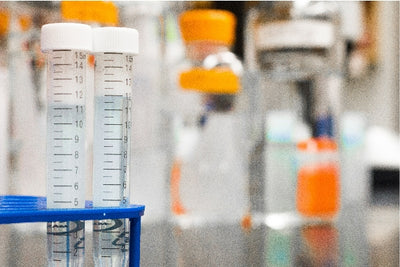5 Drinking Water Contaminants You Should Know
RSS
Dr. Eric Roy | Scientific Founder
If you’re new to water quality and filtration, you may be overwhelmed by all the available information. EPA regulates close to 100 chemicals in drinking water but there are thousands more that are currently being monitored or studied. Here’s a practical list of 5 of the most significant contaminants in drinking water that are not effectively addressed by most common water filters. At Hydroviv, we look at location-specific water quality data for each customer to determine whether these chemicals, and thousands of others, are present in your area and at what concentrations. We then create a custom filter with materials designed to target and remove each containment resulting in a filter that works better for longer. Hydroviv is the only company that optimizes your filter for your water supply.
1. PFAS (Per and Polyfluoroalkyl Substances)
PFAS are a category of contaminants that are commonly referred to as "forever chemicals.” On April 10, 2024, the US EPA has announced drinking water standards to limit exposure to 6 types of PFAS chemicals. PFAS are used in a number of consumer products including Scotchgard, Teflon, food wrappers, non-stick pans, and stain-repellent fabrics. PFAS are also the primary ingredient in firefighting foam, so it readily contaminates groundwater in areas where firefighters train and on military bases. A 2018 study by the CDC linked exposure to PFAS with an increased risk of cancer, lowered fertility rates, increased cholesterol, and developmental issues in infants and young children. A 2020 Yale study also found that PFAS increase the risk of miscarriage by 80-120%.
Not all water filters are able to remove PFAS. A recent study by Duke/NC State tested residential water filters and their ability to remove PFAS from tap water. Popular brands like Pur, Brita, Berkey, and Aquasana did not remove PFAS from tap water.
Who’s at risk: Unfortunately, there's new, troubling data coming in every day about widespread PFAS contamination. Because of this, every filter we sell provides broad protection against PFAS. The Environmental Working Group has mapped out areas of the country with known PFAS contamination. Learn more>
2. Lead
Lead contamination is one of the most common problems nationwide in drinking water. Lead enters the water supply as water passes through older, lead-containing plumbing. Buildings in major cities and older homes often have lead service pipes that connect water mains to residential plumbing. Additionally, plumbing in homes built before 1986 typically also have lead-containing solder. Lead levels can be exasperated when municipal corrosion controls fail (like what happened in Flint, Michigan) or when water sits stagnant in pipes. Lead exposure has been linked to childhood development delays, decreases in neurological function and behavior issues. No "safe" level of lead has been identified, and The American Academy of Pediatrics is advocating for a lead limit that is 15 times lower than the current federal standard.
Who’s at risk: Lead contamination is a problem in all major U.S. cities, but there have been significant issues reported recently in Newark, Pittsburgh, Portland (OR), Chicago, Boston, Denver, and New York City. Learn more>
3. Chromium 6
Chromium 6 (also known as hexavalent chromium or chrome 6), the cancer-causing chemical made famous by the Hollywood blockbuster Erin Brockovich, is commonly discharged in wastewater from industries such as steel, electroplating, leather tanning, and textile manufacturing. Despite a recent resurgence in media attention, Chromium 6 is still not regulated by EPA.
Who’s at risk: Chromium-6 contaminates drinking water all over the U.S. Abnormally high levels have been detected in cities including Madison (WI), Phoenix, Tucson, Norman (OK), Houston, Stockton (CA), Riverside (CA), and Honolulu. Learn more>
4. Arsenic
Arsenic is a naturally-occurring but highly toxic heavy metal that leaches into groundwater from surrounding bedrock. Arsenic has been linked to multiple cancers and other systemic diseases. Unfortunately, regulatory limits for arsenic in drinking water are very loose, primarily, as EPA has stated, because removing it at the municipal level is cost prohibitive. Most pitcher filters do not remove arsenic.
Who’s at risk: Areas of the country with high arsenic levels in groundwater include Maine, Texas and huge swaths of the Southwest. Learn more>
5. Chloramine
Most municipalities around the country use chlorine to disinfect their local water supply, but some, including our hometown of Washington, D.C., use chloramine. While both are safe at the levels used, neither taste very good. Most common filters are designed to remove only chlorine, but Hydroviv’s system is tailored to match whichever is used in your hometown, giving you the best-tasting results.
Who’s at risk: Check your municipality’s water report to see if your city uses chlorine or chloramine. While chlorine is the original, low-cost disinfectant, many municipalities are switching to chloramine. Learn more>
Other Articles We Think You Might Enjoy:PFAS and The Safe Drinking Water Act
Stop Using TDS/ppm Meters to Measure Water Quality
What's Causing Chalky Residue on my Stainless Steel Cookware?




